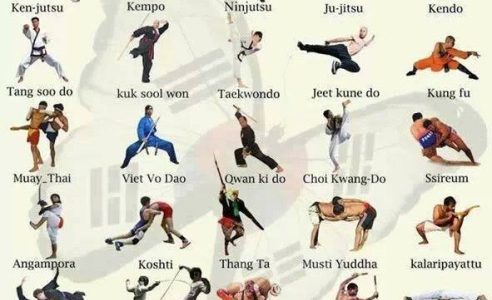The Background And Advancement Of Martial Arts Worldwide
The Background And Advancement Of Martial Arts Worldwide
Blog Article
Content Author-Chu Fallon
Martial arts have an interesting background that extends centuries and continents. You could locate it intriguing exactly how ancient methods like Shuai Jiao and Kalaripayattu laid the groundwork for modern combat methods. These self-controls not only highlight physical abilities yet also reflect the cultures that birthed them. As you explore their development, consider how globalization has transformed these conventional forms into crossbreed styles. What impacts do you think have formed today's martial arts landscape?
Ancient Martial arts: The Foundations of Battle
As you explore the globe of old martial arts, you'll uncover the abundant foundations that formed battle techniques across societies. Very early practices focused on Self-Defense and survival, commonly incorporating strikes, hurting, and weaponry.
In ancient China, as an example, strategies like Shuai Jiao stressed tosses and joint locks, while India's Kalaripayattu showcased agility and liquid activity. Japanese samurai established Kenjutsu, a polished swordsmanship that highlighted technique and technique.
These martial arts offered not just for fight but additionally as a way of individual advancement, instilling worths like respect and willpower. The blending of these methods over time laid the groundwork for the diverse martial arts you see today, each reflecting the one-of-a-kind viewpoints and demands of its society.
The Social Impact on Martial Arts Development
While martial arts usually reflect the functional needs of a culture, they likewise personify the cultural values and ideas of their origins. When you explore different martial arts, you'll observe just how they're influenced by faith, ideology, and social standards.
For https://screenrant.com/bruce-lee-fist-of-fury-shintaro-katsu-fight/ , the emphasis on regard and technique in Japanese martial arts comes from Zen Buddhism and samurai society. In contrast, Brazilian Jiu-Jitsu advertises adaptability and approach, formed by the need for performance in a diverse, modern atmosphere.
You might discover that the rituals, attires, and training techniques mirror a community's background and identity. By comprehending these social impacts, you deepen your gratitude of martial arts and their function fit human experiences around the world.
Modern Adaptations and the Globalization of Martial arts
Martial arts have actually changed substantially in recent years, adapting to modern culture and global impacts. martial art movies 'll see that typical types have combined with contemporary strategies, developing hybrid styles like MMA. These adaptations satisfy diverse audiences, making martial arts obtainable and enticing globally.
With the surge of social networks and digital platforms, you can find tutorials and competitions from all corners of the globe, damaging geographical barriers. This globalization has resulted in a common recognition for various self-controls, from Brazilian Jiu-Jitsu to Taekwondo.
As you involve with these arts, you'll realize they're not nearly battle; they advertise physical fitness, self-control, and mental health.
Inevitably, modern-day adjustments have enriched the martial arts landscape, making it a dynamic and developing method.
Conclusion
In checking out the background and development of martial arts, you uncover an interesting blend of strategies, societies, and approaches. From ancient techniques like Shuai Jiao and Kalaripayattu to the contemporary versatility seen in MMA, martial arts reflect mankind's pursuit for Self-Defense and personal growth. As you involve with these techniques, you not only acquire skills but also a much deeper gratitude for the varied traditions that shape our world today. So, proceed your trip and embrace the art of combat!
